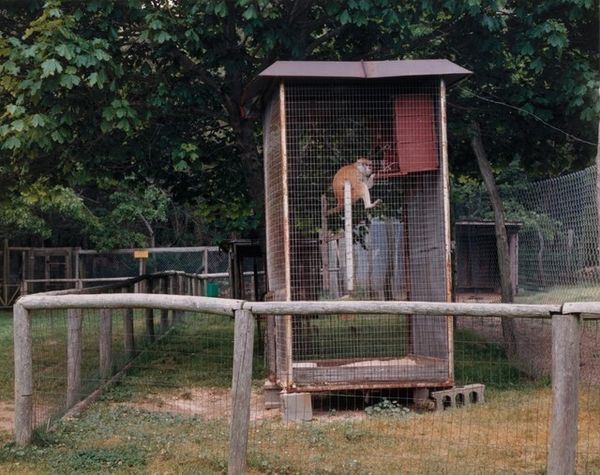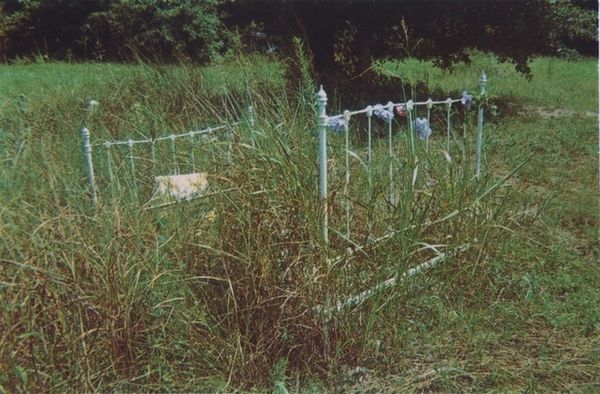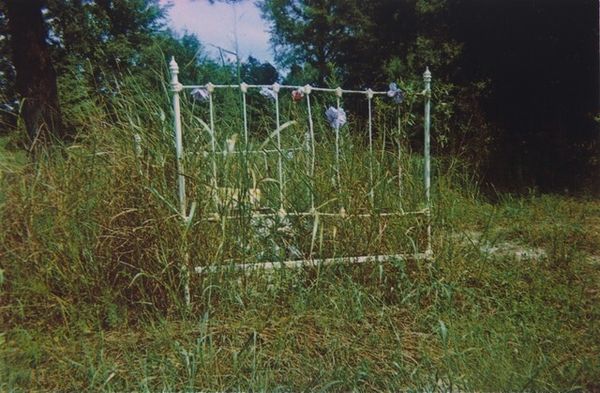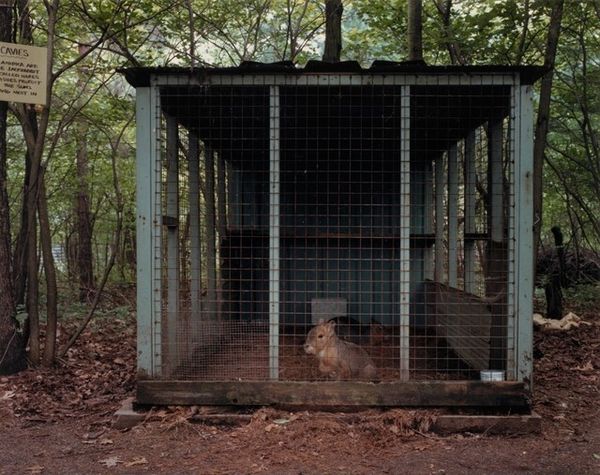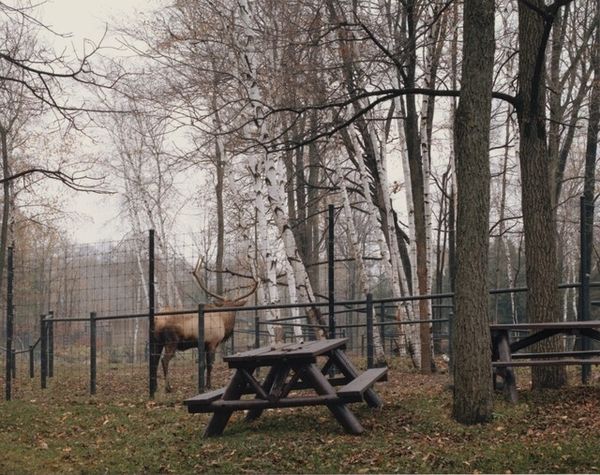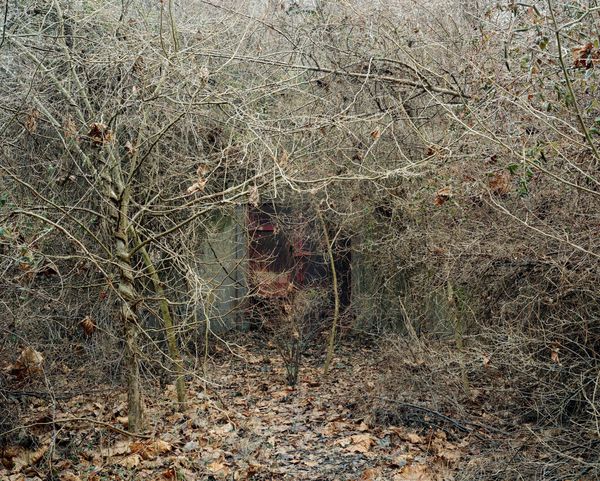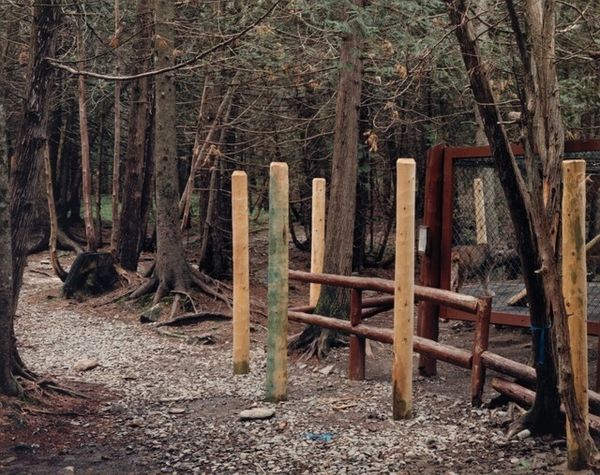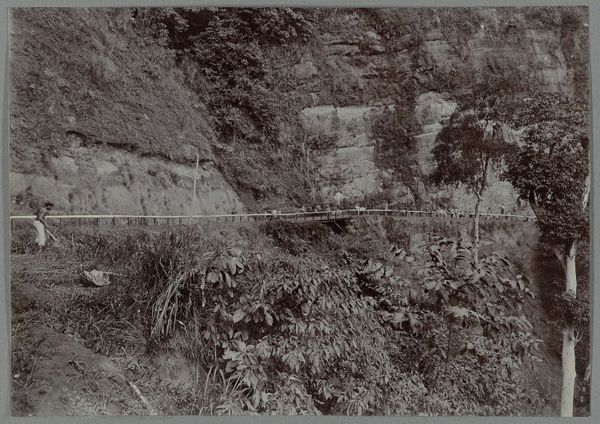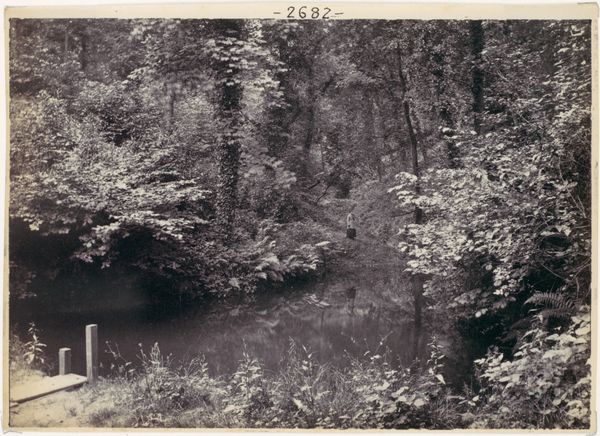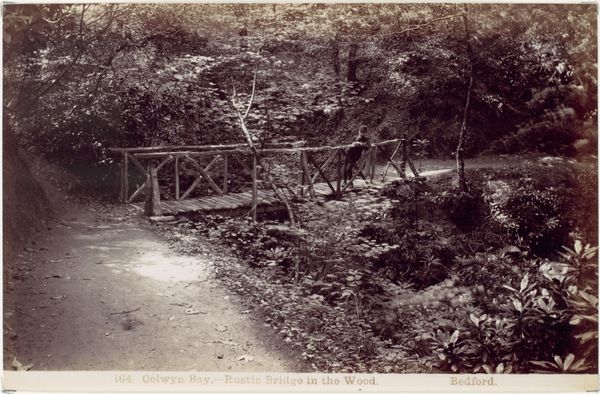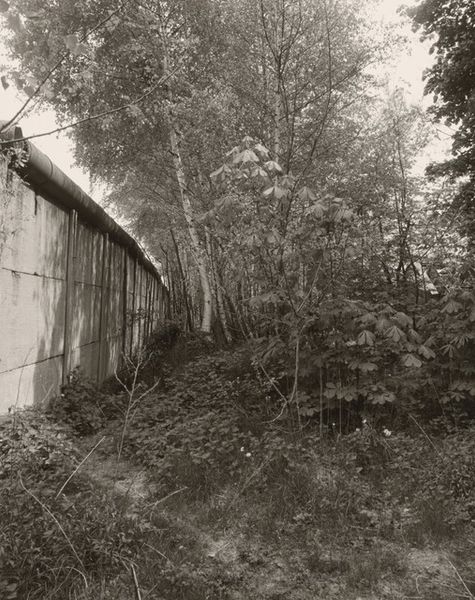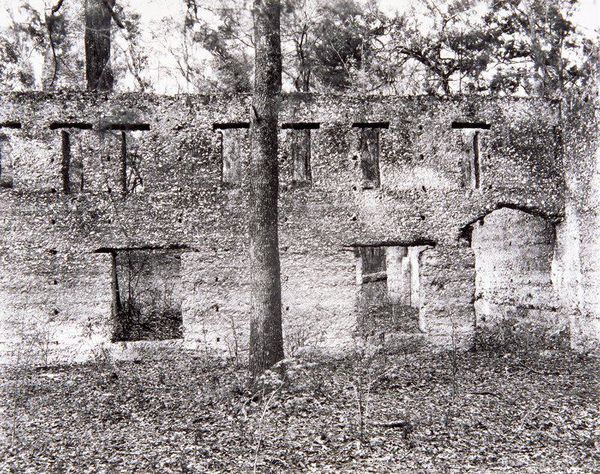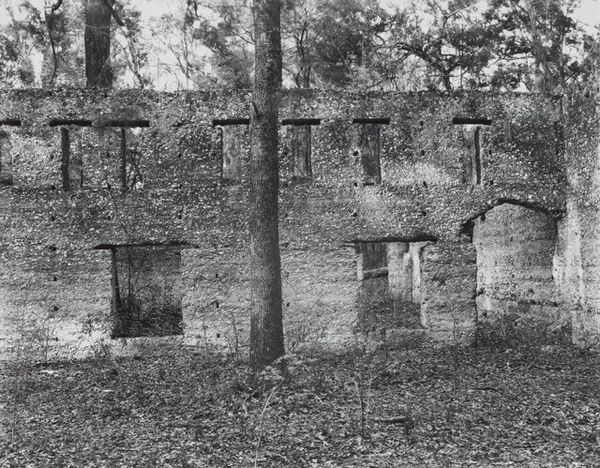
#
surveyor photography
#
abandoned
#
building site documentary shot
#
environmentalist
#
rural
#
civil engineering
#
derelict
#
nature friendly
#
naturalistic tone
#
nature heavy
Dimensions: image/sheet: 16 × 20 cm (6 5/16 × 7 7/8 in.) mount: 20.32 × 25.4 cm (8 × 10 in.)
Copyright: National Gallery of Art: CC0 1.0
Editor: This is Volker Seding’s "Timber Wolf, Elmvale Jungle Zoo, Ontario" from 1985. The photograph captures a lone wolf in a cage, seemingly blending into the overgrown surroundings. It evokes a feeling of confinement, but also resilience. What's your interpretation of this piece? Curator: For me, this photograph isn't just about a wolf in a cage. It’s a stark commentary on humanity's relationship with the natural world. Seding shot this in 1985. Consider that context: rising environmental consciousness juxtaposed with the persistent exploitation of animals for entertainment and profit. Does the zoo serve as a symbol here, maybe representing control and the disruption of natural habitats? Editor: That's a really interesting point about the historical context! I hadn't considered that angle. So, the wolf almost becomes a symbol, representing a larger issue? Curator: Precisely. And what does it mean that the animal is almost camouflaged? Is the image suggesting something about the constructedness of nature, and our flawed attempts to control it through institutions like zoos? Look at how the greenery encroaches, almost reclaiming the cage. Think about Foucault's ideas of power, control, and institutions – are they applicable here? Editor: I see what you mean. The image isn’t just a snapshot; it is layered with critiques of power structures and environmental ethics. I had initially just focused on the animal itself. Curator: Right. Photography, especially documentary photography, can function as a powerful tool for social commentary. By placing this image within the context of both art history and social issues, we can create richer discussions about these themes and their continued relevance. This picture of a wolf ends up challenging our very role in the drama. Editor: This has really shifted how I see the image! I'll definitely remember to consider the historical and theoretical contexts more closely when analyzing artwork in the future. Thanks so much!
Comments
No comments
Be the first to comment and join the conversation on the ultimate creative platform.
